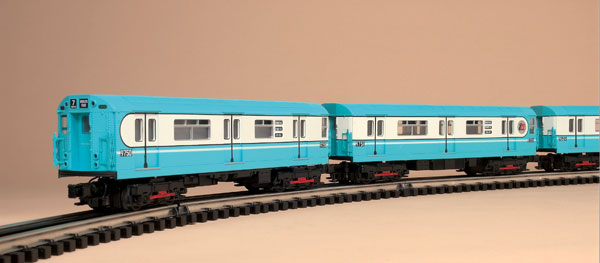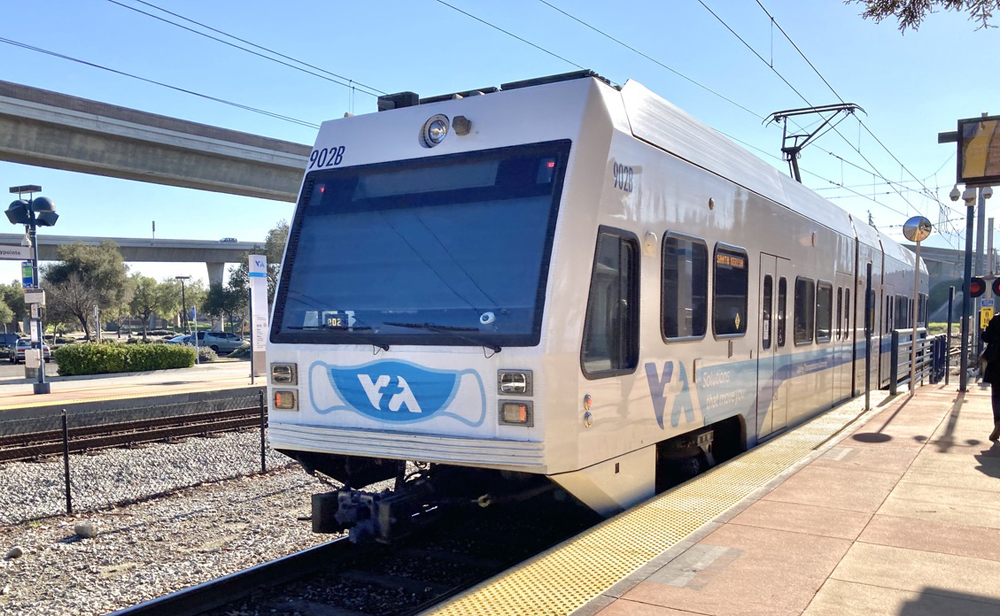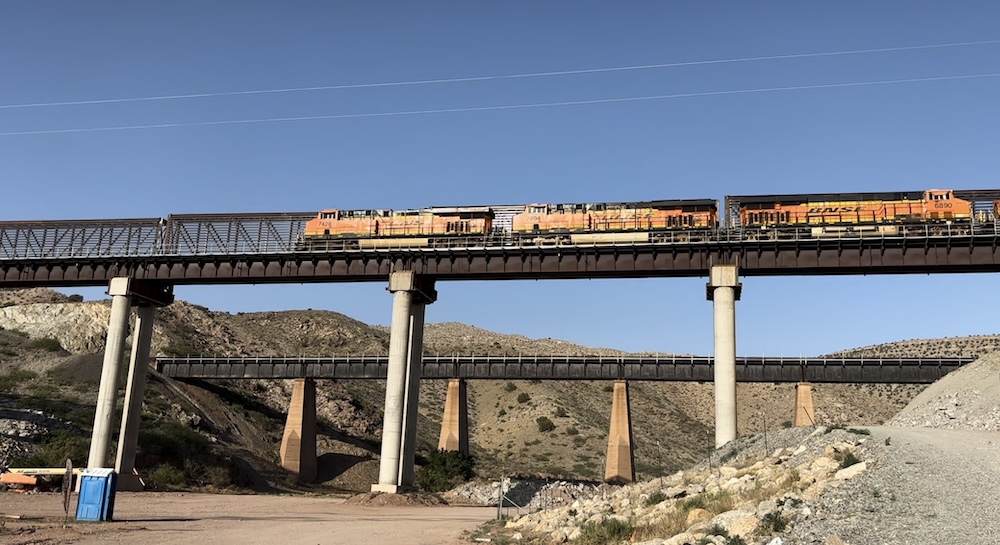The first of 424 of the eye-catching blue-and-white R-36 cars began arriving in New York City in 1962. They came at an auspicious time in the city’s history. It had again been selected as the site of a World’s Fair. This grand event opened in 1964 in Flushing Meadow.
The R-36 cars plied the no. 7 Flushing Line, the only route on which an 11-car train was operated (five pairs of R-36 cars and an R-33S). They handled express service between Times Square and the fairgrounds. The R-36 cars were retired in about 2000.
Two four-car sets are available: nos. 30-2274-0, which is equipped with LocoSound, and 30-2274-1 (the one we tested), which features ProtoSound 2.0.
Regardless of which set you select, you get one powered unit (with a pair of can-style, flywheel-equipped motors) and three non-powered coaches. All feature plastic bodies and die-cast metal frames, trucks, and couplers. Each car has overhead interior illumination and operating headlights at both ends.
Speaking of the interiors, if you look through the windows you’ll discover long seats along the walls and shiny poles for passengers to grab. But where are the people? This is an oversight that wouldn’t have been difficult to correct.
Both types of the actual R-36 cars measured 49 feet, 77/8 inches in length. They were 11 feet, 103/8 inches high. The picture-window models were numbered 9346-9523 and 9558-9769. The drop-sash cars were numbered 9524-9557.
Well, you scale modelers couldn’t do much better with these RailKing models. The 131/2-inch-long car bodies match the prototype’s length (okay, maybe they’re a couple scale inches too long). As for height, the 31/2-inch models come in about a scale 12 inches too tall.
The powder-blue-and-white paint scheme that New Yorkers loved is beautifully reproduced. Black- and silver-painted highlights (including the lines and steps of non-opening doors) and red-painted details improve each car’s appearance even more.
The car numbers on these models are prototypically accurate, as are the letter boards on both sides and the head end of each R-36. They announce that these cars are working the route between “World’s Fair” and “Times Sq.”
We had a blast running our R-36s, which maneuvered beautifully around O-31 curves. The cars moved as smoothly as Frank Gifford did when he rushed for the Giants. And Mr. Kathy Lee didn’t come with half the cool sounds that our R-36 set delivered via ProtoSound 2.0. As much fun was using the Digital Command System to program the set to start and stop at various “stations” we created on our test track.
The array of sounds is incredible. Even after I’d run the R-36 cars for more than an hour, I’m not sure I’ve heard all the announcements and crew comments.
Besides marveling at the ProtoSound effects, I came away impressed by how well the motorized unit ran in all speed ranges. On the low end, it tiptoed along at a mere 1.9 scale mph thanks to its speed-control circuitry. At the high end, it cruised at 84.6 scale mph.
Three cars are about all most of these 3-pound, 4-ounce motorized units will ever pull, since that’s how many come in the set. Ardent subway fans may buy a second set and add another three cars to create a World’s Fair express.
Our sample boasted a respectable drawbar pull of 2 pounds, 4 ounces, which equals roughly 36 free-rolling pieces of rolling stock.
So head to the Big Apple for a ride on the flagship of the IRT. You may have missed the World’s Fair by 40 years, but you’ll have fun running these superb subway cars.














